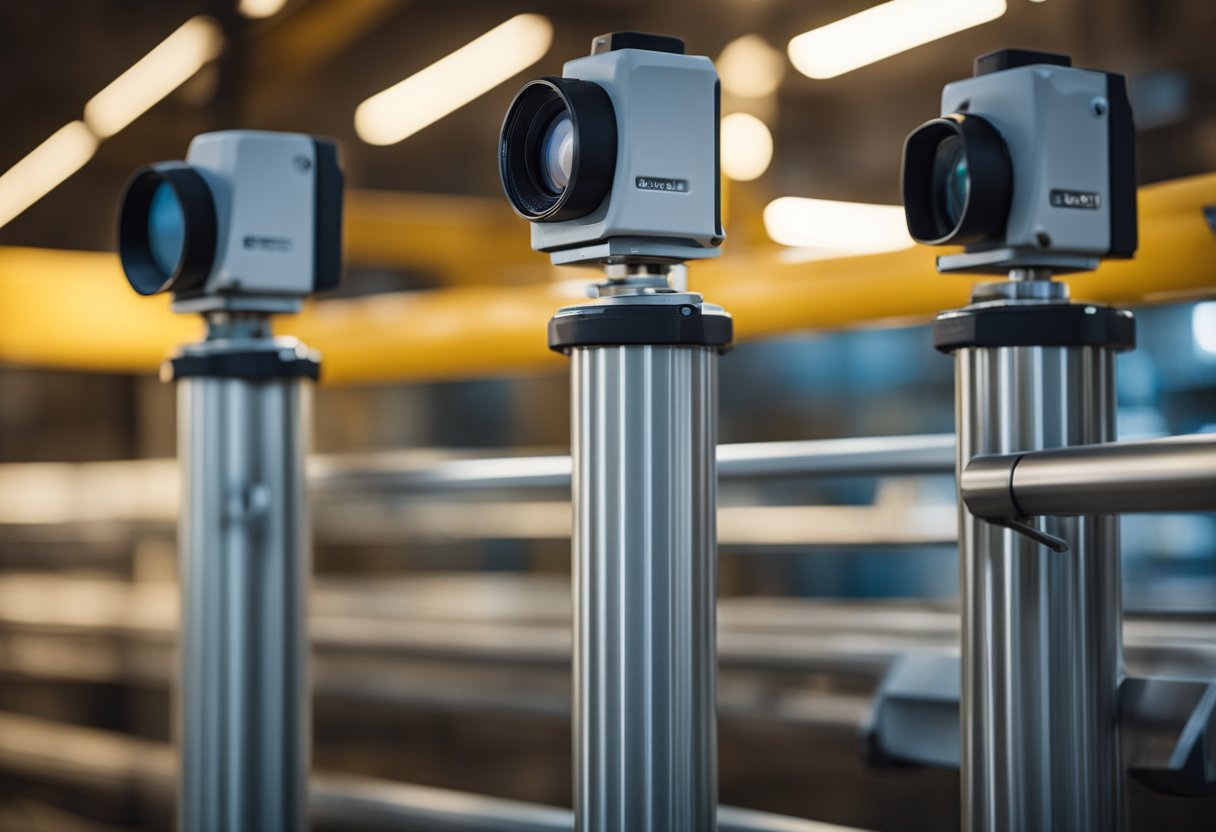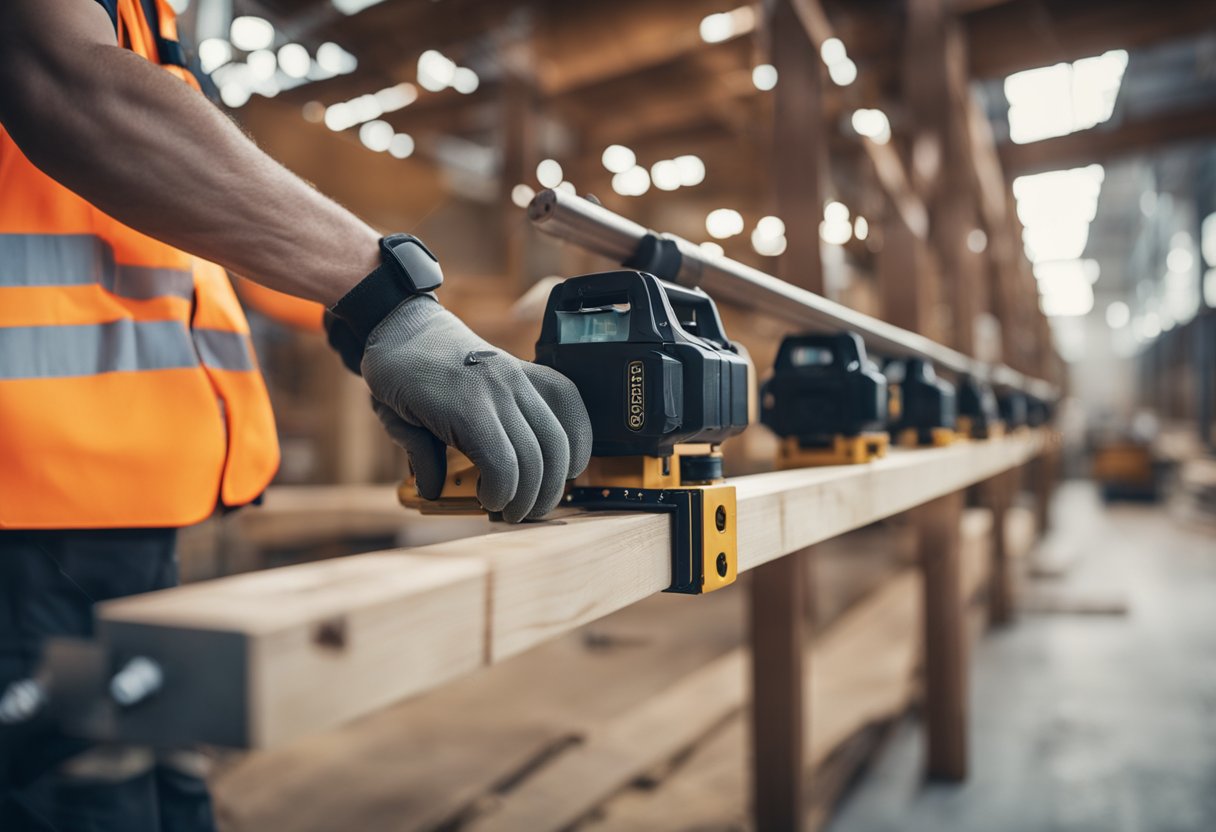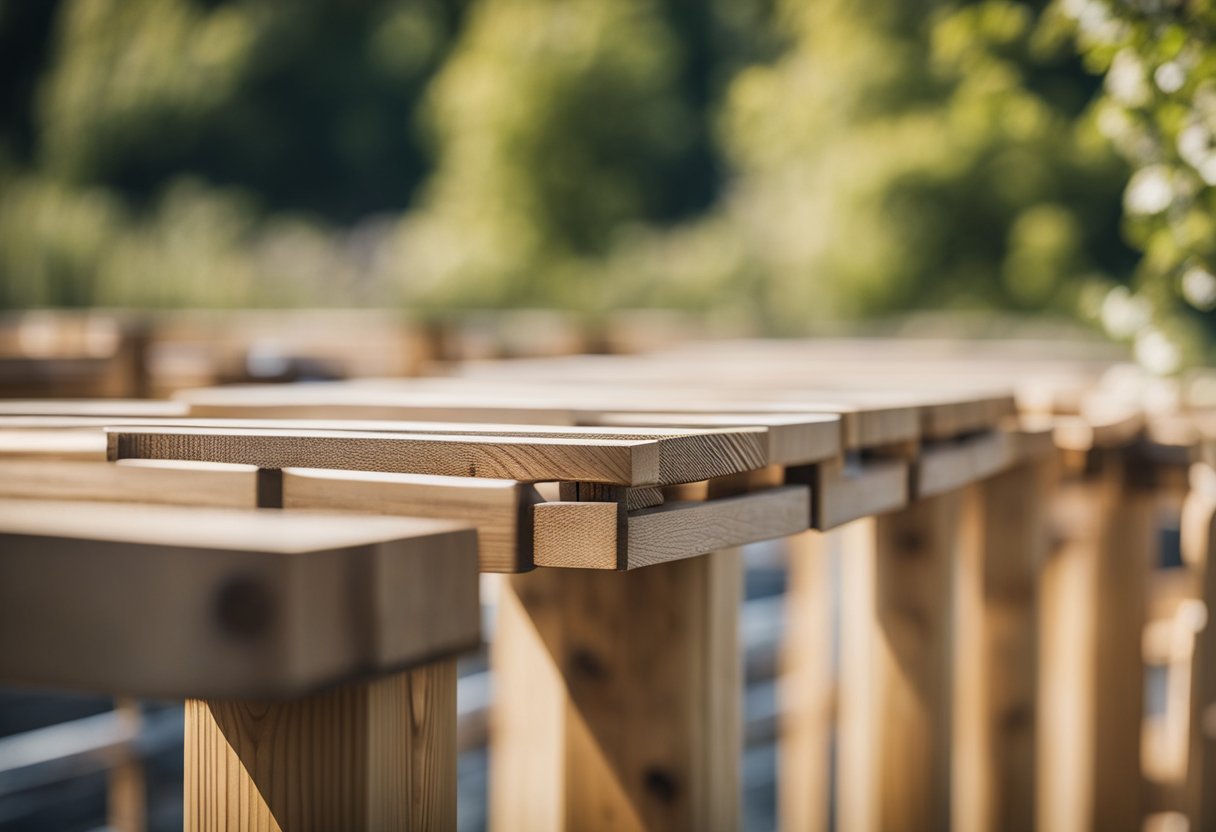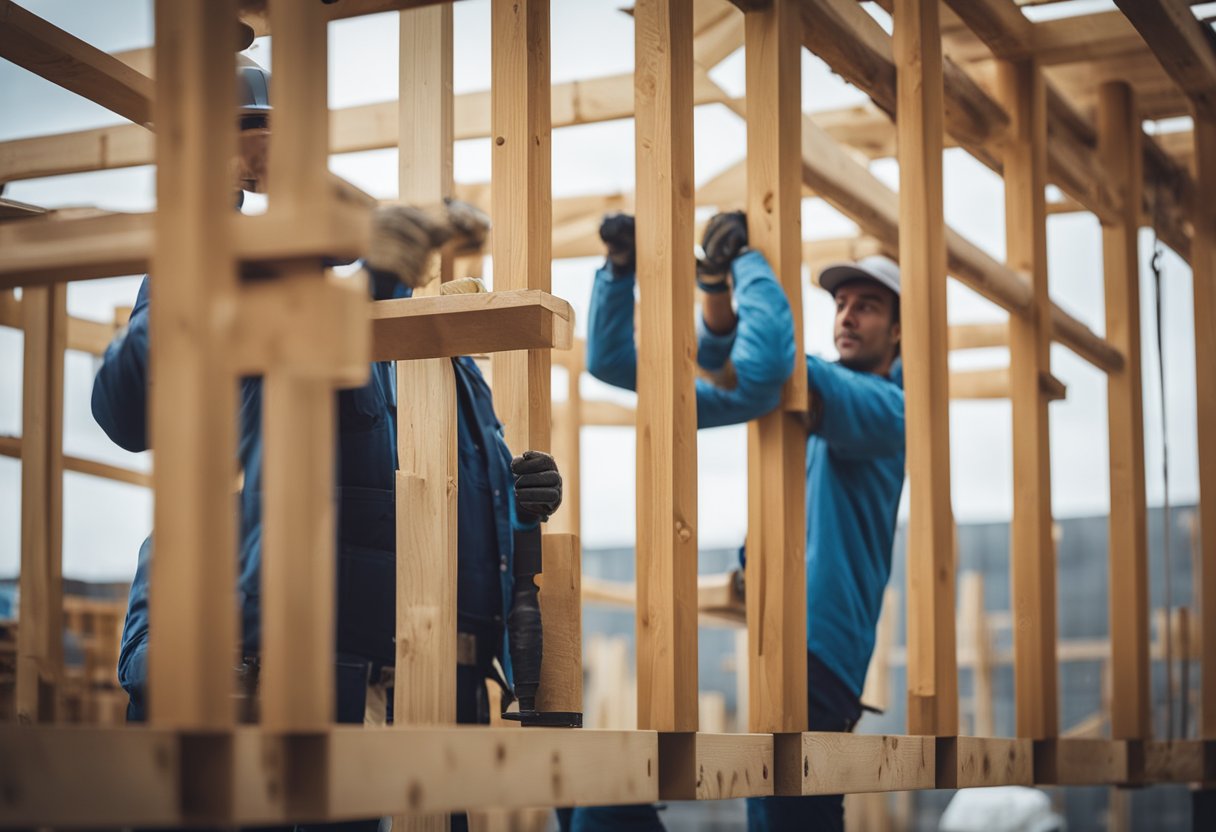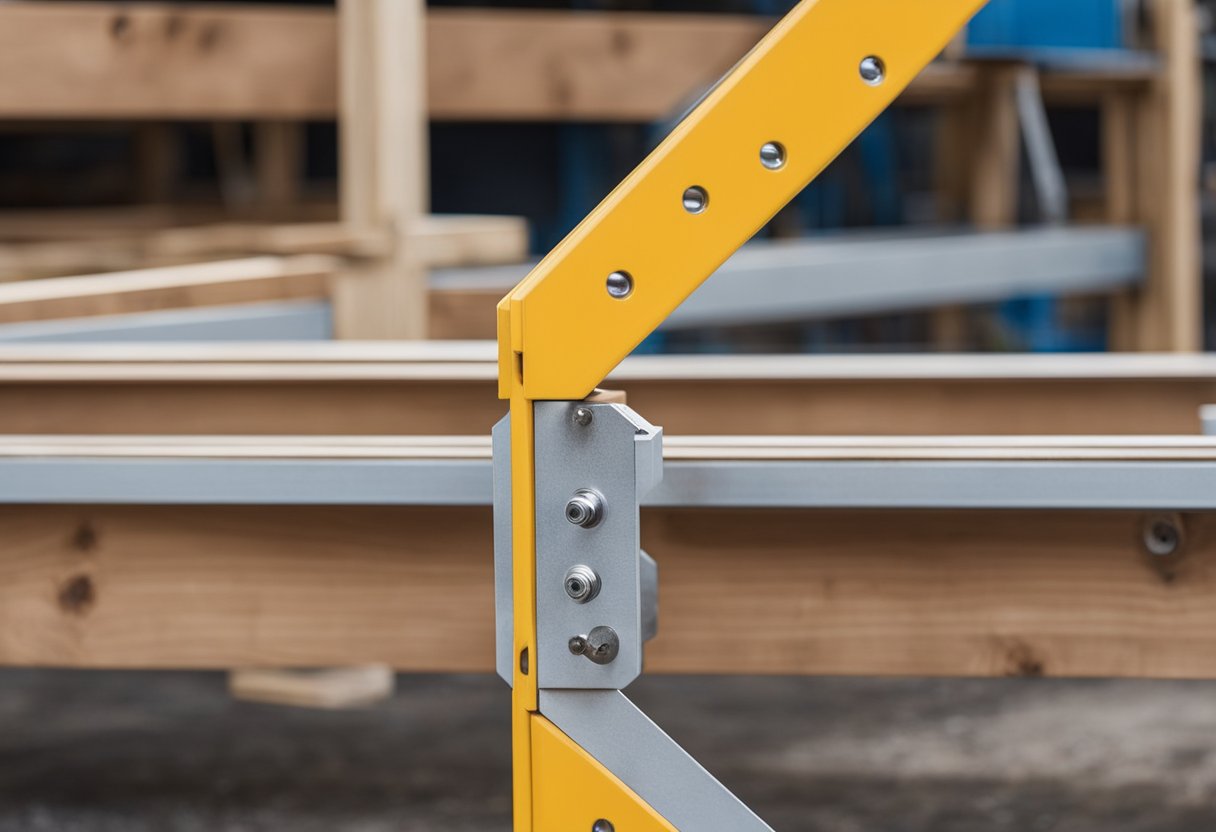Attaching LVL beams to posts is a crucial step in building a safe and sturdy structure. LVL beams, which stand for laminated veneer lumber, are known for their strength, durability, and versatility. They are often used in construction projects such as decks, roofs, and floors. However, attaching these beams to posts can be a challenging task that requires proper preparation, tools, and techniques.
Understanding LVL beams and posts is essential before beginning the installation process. LVL beams consist of multiple layers of wood veneer glued together under high pressure and heat. They offer high load-bearing capacity, dimensional stability, and resistance to warping and splitting. Posts, on the other hand, are vertical supports that transfer the weight of the structure to the ground. They can be made of wood, steel, or concrete and come in different sizes and shapes. Knowing the properties and characteristics of LVL beams and posts can help you choose the right materials and methods for your project.
Key Takeaways
- Proper preparation, tools, and techniques are essential for attaching LVL beams to posts.
- LVL beams are strong, durable, and versatile, and posts are vertical supports that transfer the weight of the structure to the ground.
- Understanding the properties and characteristics of LVL beams and posts is crucial for choosing the right materials and methods for your project.
Understanding Lvl Beams and Posts
https://www.youtube.com/watch?v=Q_NZ21citKs&embed=true
As a professional builder, I have worked with LVL beams and posts extensively. Laminated Veneer Lumber (LVL) is a strong and durable engineered wood product that is commonly used in construction projects. LVL beams are made by gluing together multiple layers of thin wood veneers to create a strong and stable beam that can support heavy loads. Posts, on the other hand, are vertical elements that support beams and transfer loads to the foundation.
When it comes to attaching LVL beams to posts, it is important to use the right hardware and techniques to ensure a strong and stable connection. The size and type of post and beam you use will depend on the specific requirements of your project. For example, a 6×6 post is commonly used for deck support columns, while a 4×4 post may be sufficient for smaller projects.
One of the most important things to consider when attaching LVL beams to posts is the type of hardware you use. There are many different types of hardware available, including post caps, beam hangers, and anchor bolts. The type of hardware you use will depend on the specific requirements of your project, such as the load capacity and the size of the beam and post.
Another important factor to consider when attaching LVL beams to posts is the orientation of the beams and posts. Beams should be installed with the narrow edge facing up, while posts should be installed with the narrow edge facing inward. This orientation helps to prevent twisting and warping of the wood, which can weaken the connection over time.
In summary, understanding the properties of LVL beams and posts is essential when it comes to attaching them together. By using the right hardware and techniques, you can ensure a strong and stable connection that will stand the test of time.
Preparation and Tools Required
https://www.youtube.com/watch?v=FI12S_toCn0&embed=true
Before attaching LVL beams to posts, it is important to prepare the necessary tools and materials. Here are some of the tools that I recommend having on hand:
- Circular saw
- Drill
- Level
- Measuring tape
- Safety glasses
- Work gloves
In addition to these tools, it is important to have the right materials. This includes LVL beams, engineered screws, and post caps.
To ensure that the beams are properly attached to the posts, it is important to follow a step-by-step guide. One useful resource is the Fine Homebuilding guide, which provides detailed instructions on how to assemble and set the long built-up beams that bear the weight of the floor framing.
Design tools such as CAD software can also be useful for planning the placement of the beams and ensuring that they are properly aligned. However, it is important to note that these tools are not necessary and can be replaced with manual measurements and calculations.
Overall, by properly preparing the necessary tools and materials and following a reliable how-to guide, attaching LVL beams to posts can be a straightforward and manageable task.
Installation Process
https://www.youtube.com/watch?v=UvR4I3wow9k&embed=true
To install an LVL beam to a post, several steps must be taken to ensure a secure and stable connection. First, the post must be properly supported and braced to prevent any movement during installation. The beam must also be properly sized and configured to meet the load requirements of the structure.
Once the post and beam are in place, the connection can be made using structural connector screws or through-bolted fasteners. It is important to follow the manufacturer’s instructions for the specific hardware being used to ensure proper installation.
Notching the post or beam is not recommended as it can weaken the structural integrity of the wood. Instead, a top plate or post cap can be used to distribute the load evenly across the post.
Blocking can also be installed between the beam and the post to provide additional support and prevent twisting or bending. The blocking should be securely fastened using appropriate hardware.
Overall, the installation process for attaching an LVL beam to a post requires careful attention to detail and proper use of fasteners and connectors. By following the manufacturer’s instructions and using appropriate hardware, a secure and stable connection can be achieved.
Different Types of Beams and Posts
https://www.youtube.com/watch?v=KL0YBKJESTk&embed=true
When it comes to attaching LVL beams to posts, there are different types of beams and posts to consider. The type of beam and post you choose will depend on the load capacity of your deck and the specific design you have in mind.
Types of Beams
There are many different types of beams available on the market today. Some of the most common types of beams include:
-
LVL (Laminated Veneer Lumber) Beams: LVL beams are made by laminating thin layers of wood veneer together to form a strong, solid beam. They are a popular choice for deck construction due to their strength and durability.
-
Triple Beams: Triple beams are made by nailing three 2×6 boards together. They are a cost-effective option for those looking to build a deck on a budget.
Types of Posts
When it comes to posts, there are many different options available as well. Some of the most common types of posts include:
-
Wood Posts: Wood posts are a popular choice for deck construction due to their affordability and ease of installation. They can be treated to resist rot and decay, making them a durable option.
-
Aluminum Posts: Aluminum posts are a lightweight and durable option for deck construction. They are resistant to rust and corrosion, making them a good choice for areas with high humidity or salt exposure.
Post Caps and Deck Railing Types
Post caps are an important component of deck construction, as they help to protect the top of the post from moisture and damage. There are many different types of post caps available, including wood, aluminum, and composite materials.
In addition to post caps, there are also many different types of deck railing available. Some of the most common types of deck railing include wood, aluminum, and composite materials. Each type of railing has its own unique benefits and drawbacks, so it is important to choose the right type for your specific needs.
Overall, when it comes to attaching LVL beams to posts, it is important to choose the right type of beam and post for your specific deck design. By considering factors such as load capacity, materials, and budget, you can ensure that your deck is strong, durable, and safe for years to come.
Safety and Building Regulations
https://www.youtube.com/watch?v=9T0koWfqGn4&embed=true
As a professional builder, I always prioritize safety and building regulations when attaching LVL beams to posts. It is important to ensure that the structure can withstand the intended load and that it complies with the International Residential Code (IRC) and local building codes.
One of the most important aspects of attaching LVL beams to posts is ensuring that the footing is adequate. The footing should be designed to support the load of the beam and the structure it supports. It is important to follow the IRC code requirements for footing size and depth.
Another crucial factor is the use of bolts to attach the beam to the post. The bolts should be of the appropriate size and spacing to ensure that the beam is securely fastened to the post. It is also important to use framing hardware that is designed to withstand the load and stress placed on the structure.
When attaching the beam to the post, it is important to follow the IRC code requirements for ledger care. This includes using a moisture barrier and ensuring that the beam is properly flashed to prevent water damage.
Building permits are required for most construction projects, including attaching LVL beams to posts. It is important to obtain the necessary permits and inspections to ensure that the structure is built to code and is safe for use.
In summary, attaching LVL beams to posts requires careful planning and attention to detail to ensure that the structure is safe and compliant with building codes. By following the IRC code requirements for load, footing, bolts, framing, ledger care, and building permits, you can ensure that your structure is built to last and is safe for use.
Maintenance and Repairs
As with any other part of your deck, LVL beams require regular maintenance to keep them in good condition. The amount of maintenance required will depend on the climate and weather conditions in your area, as well as the type of finish you used on your deck.
To keep your LVL beams clean, simply sweep or blow off any debris that accumulates on them. You can also use a garden hose or pressure washer to remove any dirt or grime that has built up over time. Be sure to use a gentle setting on your pressure washer to avoid damaging the wood.
If you notice any signs of damage to your LVL beams, such as cracks or splits, it is important to address them as soon as possible. Ignoring these issues can lead to more serious problems down the line, such as structural damage to your deck.
To repair minor damage to your LVL beams, you can use wood filler or epoxy. Simply apply the filler or epoxy to the damaged area, let it dry, and sand it down until it is smooth. For more serious damage, such as large cracks or splits, it is best to consult with a professional contractor to determine the best course of action.
Regular maintenance and prompt repairs can help ensure that your LVL beams remain in good condition for years to come, and can help prevent costly repairs or replacements down the line.
Deck Design and Ideas
When it comes to designing a deck, there are many different ideas and styles to choose from. The type of decking material you choose can have a big impact on the overall look and feel of your deck. Some popular options include wood, composite, and PVC decking. Each material has its own unique benefits and drawbacks, so it’s important to do your research before making a decision.
In addition to the decking material, you’ll also need to consider other design elements such as stairs, railings, and porches. These features can help to enhance the functionality and aesthetic appeal of your deck. For example, adding a porch to your deck can provide a shaded area for relaxing or entertaining guests.
If you’re looking for inspiration for your deck project, there are many online resources available. Deck project galleries and deck inspiration websites can provide you with ideas for different styles and layouts. You can also find ideas for adding benches, planters, skirting, arbors, pergolas, lighting, and water drainage systems to your deck.
Another popular trend in outdoor design is building outdoor furniture. If you’re handy with tools and enjoy DIY projects, you can create your own custom furniture pieces to complement your deck. This can be a great way to save money and add a personal touch to your outdoor space.
Overall, there are many different design elements to consider when building a deck. By doing your research and carefully planning your project, you can create a beautiful and functional outdoor space that you’ll enjoy for years to come.
Hiring Professionals
When it comes to attaching LVL beams to posts, it’s always best to hire a professional contractor who has experience with this type of work. I highly recommend working with a contractor who has a good reputation and is licensed and insured.
Hiring a professional contractor will give you peace of mind knowing that the job is being done correctly, and that the work will be up to code. A contractor will also be able to provide you with a stamped drawing that shows the proper attachment method for your specific project.
When working with a contractor, it’s important to have a clear understanding of the scope of the project and what is expected of both parties. This can be accomplished by having a detailed contract that outlines the work to be done, the timeline for completion, and the payment schedule.
It’s also important to work with an engineer or structural engineer to ensure that the design of the attachment is sound and meets the necessary building codes. An engineer can provide you with the necessary calculations and drawings to ensure that the attachment is strong enough to support the load it will be carrying.
Overall, hiring a professional contractor, working with an engineer, and having a clear contract in place are all important steps in ensuring that your LVL beam attachment project is successful and up to code.
Frequently Asked Questions
What is the proper way to attach an LVL beam to a post?
The proper way to attach an LVL beam to a post is to use metal framing brackets. The brackets should be attached to the post with structural screws and then the LVL beam should be bolted to the bracket. This will ensure a secure connection that can withstand the weight of the load.
Can screws be used to attach LVL beams to posts?
Screws should not be used to attach LVL beams to posts. The recommended method is to use bolts and metal framing brackets. Screws can loosen over time and compromise the structural integrity of the connection.
What are the recommended supports for LVL beams?
LVL beams should be supported by either posts or walls. The supports should be spaced no more than 8 feet apart and should be able to withstand the weight of the load. The size and type of support needed will depend on the size and weight of the LVL beam.
How do I install an LVL beam in my garage?
Installing an LVL beam in a garage requires careful planning and proper installation techniques. It is recommended to consult with a structural engineer or licensed contractor to ensure that the beam is installed correctly and meets all local building codes.
What is the cost of installing an LVL beam?
The cost of installing an LVL beam will vary depending on the size of the beam, the length of the span, and the complexity of the installation. It is recommended to get quotes from multiple contractors to ensure that you are getting a fair price.
What is the recommended nailing pattern for LVL beams?
The recommended nailing pattern for LVL beams is to use two rows of nails on each side of the beam. The nails should be spaced 12 inches apart and should be driven at a 45-degree angle into the beam. This will provide a secure connection that can withstand the weight of the load.

Hi, I’m Sal Muller of Tooltrip.com. My DIY experience led me to understand essential power tools for home projects. Tooltrip.com guides enthusiasts and professionals in choosing right tools for any job. I provide concise top tool reviews for easier, efficient DIY.

